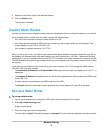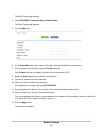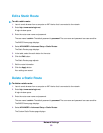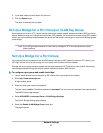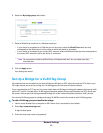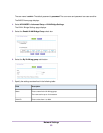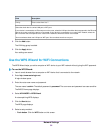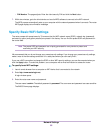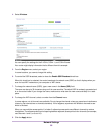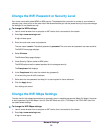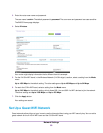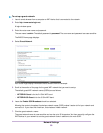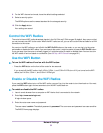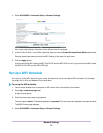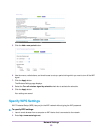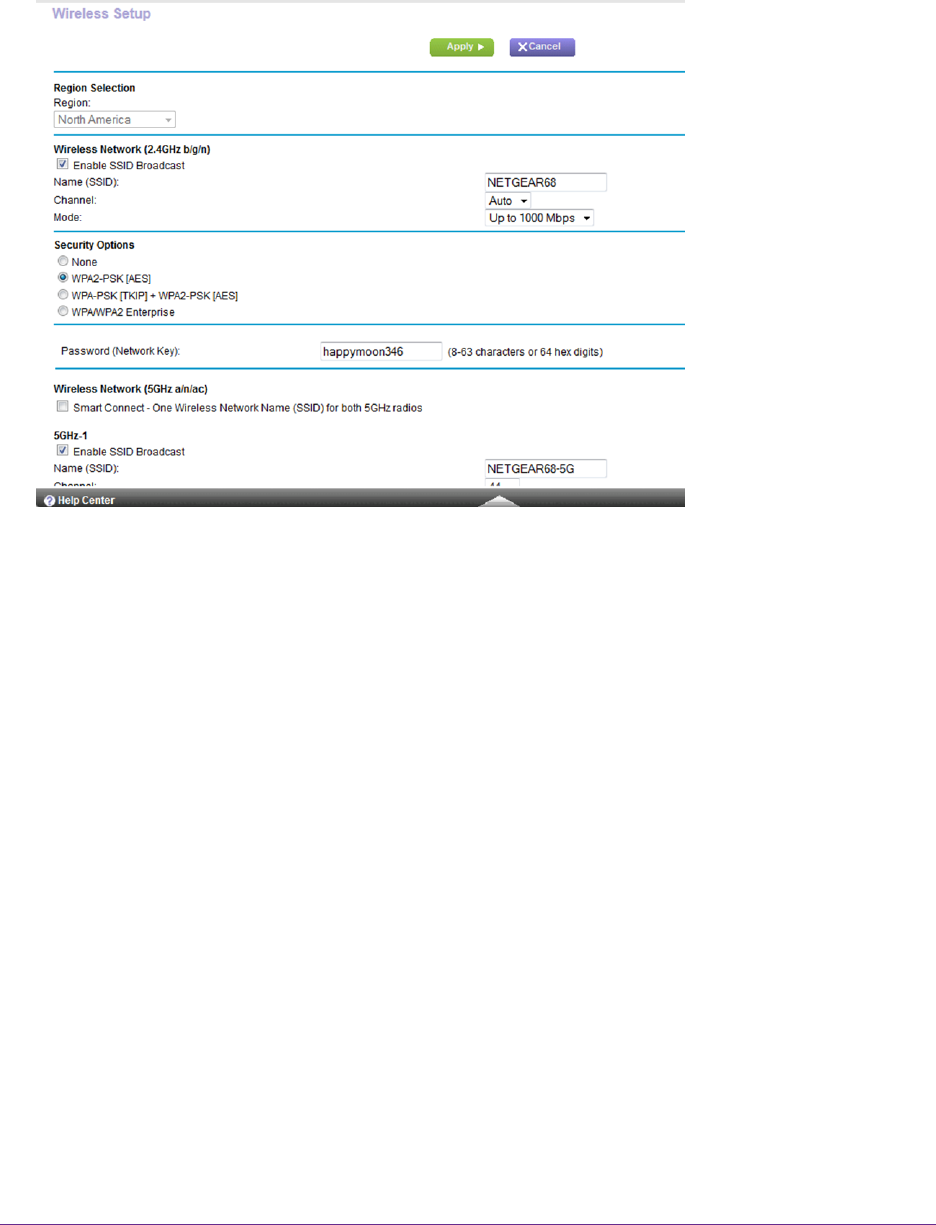
4. Select Wireless.
You can specify the settings for the 2.4 GHz, 5 GHz-1, and 5 GHz-2 bands.
Your router might display information that is different from this example.
5. From the Region menu, select your region.
In some locations, you cannot change this setting.
6. To control the SSID broadcast, select or clear the Enable SSID Broadcast check box.
When this check box is selected, the router broadcasts its network name (SSID) so that it displays when you
scan for local WiFi networks on your computer or WiFi device.
7. To change the network name (SSID), type a new name in the Name (SSID) field.
The name can be up to 32 characters long and it is case-sensitive.The default SSID is randomly generated and
is on the router’s label. If you change the name, make sure to write down the new name and keep it in a safe
place.
8. To change the WiFi channel, select a number from the Channel menu.
In some regions, not all channels are available. Do not change the channel unless you experience interference
(shown by lost connections or slow data transfers). If this happens, experiment with different channels to see
which is the best.
When you use multiple access points, it is better if adjacent access points use different channels to reduce
interference.The recommended channel spacing between adjacent access points is four channels (for example,
use Channels 1 and 5, or 6 and 10).
9. Click the Apply button.
Network Settings
86



